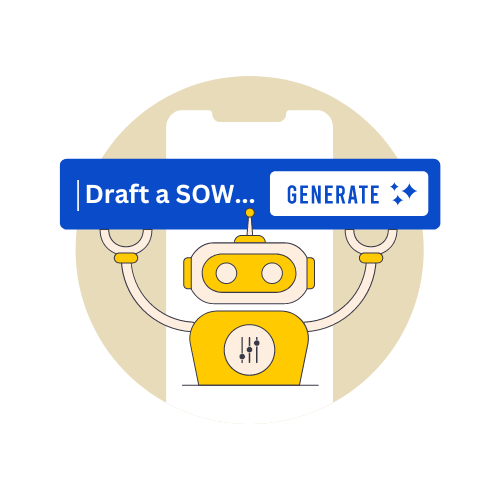The integration of artificial intelligence (AI) into the legal industry has revolutionized the way contracts are drafted, offering unprecedented efficiency and accuracy. AI-driven tools streamline the contract creation process, reducing human error and ensuring compliance with relevant laws and regulations. Here’s a comprehensive guide on how to leverage AI to write contracts.
Understanding AI in Legal Contract Drafting
AI in legal contract drafting primarily involves natural language processing (NLP) and machine learning algorithms. These technologies analyze vast amounts of legal data to understand and generate human-like text. AI tools can review previous contracts, legal statutes, and case law to provide relevant clauses and suggest modifications tailored to specific needs.
Benefits of Using AI to Write Contracts
- Efficiency and Speed: AI tools can generate contract drafts in a fraction of the time it would take a human. This acceleration is crucial in legal environments where time is often of the essence.
- Accuracy and Consistency: AI minimizes human error, ensuring that contracts are free from common mistakes. It also maintains consistency across documents, which is essential for large organizations that deal with numerous contracts.
- Cost-Effective: By reducing the time lawyers spend on drafting and reviewing contracts, AI tools help lower legal costs. This cost-efficiency can be particularly beneficial for small businesses and startups.
- Customization and Compliance: AI can tailor contracts to specific needs and ensure they comply with the latest legal standards. It can adapt to changes in laws and regulations, providing up-to-date contractual provisions.
Steps to Using AI for Drafting Legal Contracts
1. Selecting the Right AI Tool
Choosing the right AI tool is the first step. Various AI-driven contract drafting tools are available, such as Contract Sent, OpenAI, and LawGeex. Evaluate these tools based on features like ease of use, integration capabilities, and the breadth of legal templates they access.
2. Inputting Relevant Data
Once you have selected an AI tool, input all necessary information. This includes details about the parties involved, the nature of the agreement, and any specific terms or conditions. High-quality input data ensures the AI can generate a precise and relevant draft.
3. Analyzing Historical Data
AI tools often come with the ability to analyze historical contracts and legal documents. Uploading previous contracts can help the AI learn and identify the preferred language and clauses used in similar agreements. This step helps in generating a draft that aligns with past practices and standards.
4. Generating the Initial Draft
With the necessary data input, the AI tool will generate an initial draft of the contract. This draft will include standard clauses and terms pertinent to the type of agreement being drafted. The AI uses its database to ensure all necessary provisions are included.
5. Reviewing and Editing
While AI can draft a comprehensive contract, human oversight is still crucial. Legal professionals should review the draft to ensure it meets all specific requirements and make any necessary adjustments. This review process ensures the final document is legally sound and customized to the parties’ needs.
6. Leveraging AI for Continuous Improvement
AI tools learn and improve over time. Use the feedback from each contract review to train the AI further. This continuous learning process enhances the tool’s accuracy and efficiency in future drafts.
Challenges and Considerations
While AI offers significant advantages, there are challenges and considerations to keep in mind:
- Data Security and Privacy: Legal contracts contain sensitive information. Ensure the AI tool you choose has robust security measures to protect data privacy.
- Initial Setup and Training: Setting up AI tools and training them with historical data can be time-consuming. However, the long-term benefits often outweigh the initial investment.
- Legal Expertise: AI cannot replace the nuanced understanding and judgment of a seasoned legal professional. Always involve a human lawyer in the review process to catch any issues the AI might miss.
The use of AI in drafting legal contracts is transforming the legal landscape. By leveraging AI, legal professionals can draft contracts more efficiently, accurately, and cost-effectively. While AI tools are powerful, they are most effective when used in conjunction with human expertise. As AI technology continues to evolve, its integration into the legal field promises to bring even greater advancements in contract drafting and beyond.
Want to Try Our Contract Drafting Tool?
We’ve build a contract drafting tool that is trained on our contract template library. It’s a great way to quickly get a base for your contract template that you can then have your lawyer review and customize for your business.
What’s next?
Need a lawyer to review your newly drafted contract? Check out our legal professional directory.


